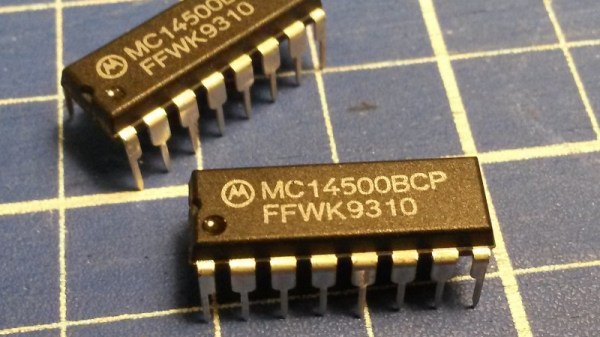In the 1980s there was an impetus for the first time for young people to be equipped with computer literacy. A variety of different educational programmes were launched, typically involving a collaboration between a computer manufacturer and a broadcaster, and featuring BASIC programming on one of the 8-bit home computers of the day. One such educational scheme was a bit different though, the German broadcaster WDR produced an educational series using a modular computer featuring an unusual 1-bit processor that was programmed in hexadecimal machine code. [Jens Christian Restemeier] has produced a replica of this machine, that is as close to the original as he can make it. (Video, in German, embedded below.)
The computer is called the WDR-1, and had its origin in a kit machine before it was taken up by the broadcaster. The unusual 1-bit processor is a Motorola MC14500, which was produced from 1977 onwards for industrial control applications. He takes the viewer in the video below the break through the machine’s parts, explaining the purpose of each daughter card and the motherboard. Lacking an original to copy he instead worked from photographs to replicate the chip placements of the original, substituting pin headers for the unusual sockets used on the 1980s machines. Take a look at his video, below the break.
More information on the WDR-1 can be found online in German (Google translate link). Meanwhile we’ve featured the MC14500 before, in a small embedded computer.
Continue reading “What Everyone Else Did With Eight Bits, The Germans Did With Only One”











